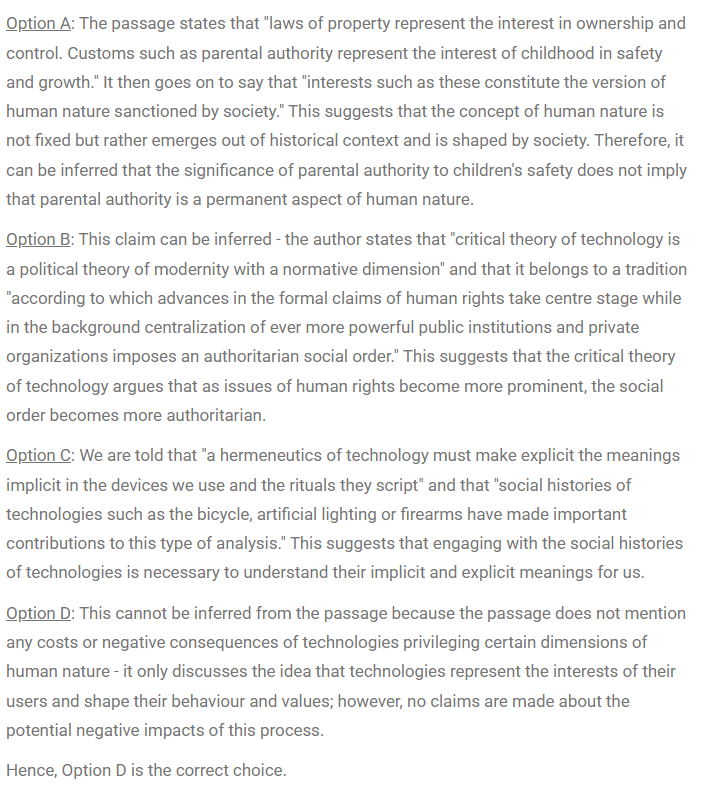CAT RC Questions | CAT RC- Social Science questions
FundaMakers is the Best CAT Online Coaching In India. Now prepare for CAT anytime with FundaMakers. We provide well-ordered syllabus coverage for both offline and online CAT preparation batches. FundaMakers brings to you the power-packed, well-structured CAT previous year question bank with more than 4000+ CAT Past Year questions. In the VARC section, one of the most frequently asked questions is from the topic- Reading Comprehension. Reading Comprehension turns out to be an important part of the VARC section from which over 60-70% of the questions are based on RC in the CAT Exam.
FundaMakers as a team has taken a painstaking step to bring you all the video solutions of the Reading Comprehension asked in the Previous Year CAT exam. CAT question bank offered by FundaMakers is a power-packed topic-wise compilation of the entire CAT previous year questions. Questions from the Reading Comprehension topic are some of the most scoring questions in the VARC section. To maximize your CAT score make use of FundaMakers CAT Question Bank. “Questions from CAT previous years” examination papers have been incorporated. Let’s get started with CAT Past Year Reading Comprehension Questions.
Comprehension
The passage below is accompanied by a set of questions. Choose the best answer to each question.
Critical theory of technology is a political theory of modernity with a normative dimension. It belongs to a tradition extending from Marx to Foucault and Habermas according to which advances in the formal claims of human rights take center stage while in the background centralization of ever more powerful public institutions and private organizations imposes an authoritarian social order. Marx attributed this trajectory to the capitalist rationalization of production. Today it marks many institutions besides the factory and every modern political system, including so-called socialist systems. This trajectory arose from the problems of command over a disempowered and deskilled labor force; but everywhere [that] masses are organized – whether it be Foucault’s prisons or Habermas’s public sphere – the same pattern prevails. Technological design and development is shaped by this pattern as the material base of a distinctive social order. Marcuse would later point to a “project” as the basis of what he called rather confusingly “technological rationality.” Releasing technology from this project is a democratic political task. In accordance with this general line of thought, critical theory of technology regards technologies as an environment rather than as a collection of tools. We live today with and even within technologies that determine our way of life. Along with the constant pressures to build centers of power, many other social values and meanings are inscribed in technological design. A hermeneutics of technology must make explicit the meanings implicit in the devices we use and the rituals they script. Social histories of technologies such as the bicycle, artificial lighting or firearms have made important contributions to this type of analysis. Critical theory of technology attempts to build a methodological approach on the lessons of these histories. As an environment, technologies shape their inhabitants. In this respect, they are comparable to laws and customs. Each of these institutions can be said to represent those who live under their sway through privileging certain dimensions of their human nature. Laws of property represent the interest in ownership and control. Customs such as parental authority represent the interest of childhood in safety and growth. Similarly, the automobile represents its users in so far as they are interested in mobility. Interests such as these constitute the version of human nature sanctioned by society. This notion of representation does not imply an eternal human nature. The concept of nature as non-identity in the Frankfurt School suggests an alternative. On these terms, nature is what lies at the limit of history, at the point at which society loses the capacity to imprint its meanings on things and control them effectively. The reference here is, of course, not to the nature of natural science, but to the lived nature in which we find ourselves and which we are. This nature reveals itself as that which cannot be totally encompassed by the machinery of society. For the Frankfurt School, human nature, in all its transcending force, emerges out of a historical context as that context is [depicted] in illicit joys, struggles and pathologies. We can perhaps admit a less romantic . . . conception in which those dimensions of human nature recognized by society are also granted theoretical legitimacy.
Explanatory Answer
Method of solving this CAT RC Question from RC- Social Science question
Correct Option: D

Hey!
Worried about IIM calls due to your marks in 10th,12th, and Graduation?
Don't worry! Know your chances of getting an IIM Call based on your profile with our:-
Profile Professor: https://fundamakers.com/profile-professor/

5 Must- NOT-Dos during CAT Preparation.
- Do not treat CAT as 'Everything'.
- Do not quit your job for CAT exam preparation.
- Learning till The Eleventh hour instead of doing proper revision.
- Not checking the syllabus thoroughly.
- Piling up multiple books.
Click To Read:- Common mistakes made by CAT aspirants during preparation.
FundaMakers- Best Online and Offline CAT Online Preparation Institute in India
For any CAT Preparation related query, reach out to us at 9598333344.